I’ve had a long love affair with the Bahamas and with Grand Bahama Island in particular. I’ve spent many days exploring its vast bonefish habitat—from the lush, food-rich north side with its mangrove abundance to the snotty bones that prowl the achingly clear beaches on the south side. I’ve made friends. And so I agonized, sitting in the comfort of my green little bubble in Vermont, while Hurricane Dorian pummeled the Grand Bahama—especially the East End, where the storm hovered with winds of over 150 mph on September 2nd—and stubbornly refused to move on.
The storm surge that battered the island topped 25 feet as the storm dropped three feet of rain, leaving at least 60 percent of the island submerged. In Freeport, the airport was severely damaged and the hospital and its two supermarkets were inundated. It was several days before I learned via Facebook that my friends there were safe but that the settlement of MacLean’s town, on the East End where the worst storm damage occurred, was pretty much wiped off the map. With it went two famous fishing lodges, East End Lodge and Deep Water Cay.
On Grand Bahama, 10 people lost their lives. 60 perished on Abaco. And across both islands, hundreds remain missing.
“Tom, we’re open for business and the best thing anyone can do for Grand Bahama is to come and fish and contribute to the local economy. The hotel is open and the fishing is fantastic. We need people to help get the word out.” was the message I got from my friend Greg Vincent, co-owner of H2O Bonefishing in Freeport.
I had already planned to be filming for a TV show on Andros (unaffected by the storm) in early December, so a couple of hops on domestic flights could get me there to see for myself. As I drove from the airport in Freeport I could see things getting back to normal. Lots of downed trees and debris still covered the landscape in certain low-lying places where homes were destroyed, but otherwise Freeport seemed to be getting back on its feet quickly. I checked into a room at Pelican Bay Resort—the hotel actually looked to be in better shape than it had been in pre-hurricane days, as many of the rooms had been re-done.

Greg and his partner Jason Franklin had set me up with guide Carl Rolle for a half day, and since I only had a day and a half to fish I tossed my bags into my room and met Carl in the parking lot. He put his boat in the water faster than any guide I’d ever fished with and shortly we were on a flat west of Freeport. The conditions, unfortunately, were not promising. The wind was blowing about 18, we had heavy cloud cover, and the outgoing tide was bringing dirty water in from silty flats on the inside. I asked Carl if the dirty water was from the hurricane and he said, no, it was just from the sustained winds recently. He told me some of the H2O guides were out a week after the hurricane and by then the water had already cleared up.
We found some clear water, and Carl poled the skiff along some beautiful flats, hugging the mangroves. As one would expect given the poor visibility, we didn’t see fish until they were just off my rod tip when, of course, they would spook immediately—a disheartening reality given that I saw more double-digit bonefish that short afternoon than I have ever seen in one day, even if all I saw of most of them was their ass end, as they bolted from the boat.
We did see two tailers that day and I managed to hook both. One was a double digit fish that I lost in the mangroves, and the one I landed was about eight pounds. Not a bad half-day for shitty conditions.

As with nearly every Bahamian guide I have ever fished with, I thoroughly enjoyed my day with Carl, who I had never fished with before. Carl has guided for 40 years and comes from a bonefishing family on the West End of Grand Bahama—his father was the legendary guide Bonefish Foley. His attitude toward the hurricane was typical of Bahamians, who have learned to deal with the forces of nature with their characteristic Bahamian attitude. In 2005, Hurricane Wilma severely damaged the West End of Grand Bahama and Carl lost his home. This time around, Dorian spared the West End from its most damaging fury and, as Carl tells it, “I only lost my car.” I asked him if it was insured and he shook his head to indicate it wasn’t. “I’ve just been taking the bus into work until I get around to finding a new one,” he said. No whining, no complaining, no gripes about the government.
Carl loves being on the water and was constantly drumming lightly on the deck while the boat was running, humming to himself. I asked him if he was a musician and he told me he was a drummer. He had even played drums with Elon Moxey, my favorite Bahamian musician. I was more impressed than if he told me he fished with Lefty Kreh.
That night I sat down with Greg Vincent and Jason Franklin, owners of H2O Bonefishing at Bones Bar in Lucaya, which is probably my favorite watering hole in the world. I asked them where most of the hurricane assistance came from as the Bahamas is not a wealthy country, depending mainly on tourism. “The most assistance, aside from our government, came from the US Coast Guard, World Food Kitchens, and especially from an organization called Team Rubicon. We had more food than we needed. The support was so overwhelming, but I was really impressed with this Team Rubicon organization. It’s a non-profit based in the states that provides disaster relief to mostly uninsured people (and most of the people on the East End were not insured). They helped with construction and health care and pretty much anything else that was needed. The outfit is staffed by military veterans and first responders, and these guys just roll up their sleeves and do the dirty work. They’re amazing. And in addition to the US and Bahamian governments and the NGOs, what was heartwarming was all the private boats that arrived from Florida just on their own. They brought food, water, generators, and other things that were needed. Totally unsolicited.”
These days, when traveling in foreign countries it is often embarrassing to be an American, but at that moment I felt very proud of my country.
The next morning I woke up early with anticipation. Even though I had been fishing every day, all daym for the past 10 days, I never get tired of chasing bonefish. And, I was especially excited because I was fishing with my old friend Jason, one of the best guides and anglers I know. A Bahamian citizen who was born on Christmas Island but sports a British accent from his English parents, Jason is just plain fun. The wind had died, the sun was out, and I knew we’d have a good day. On the ride out along the north side, I tried to decide what to rig on my 10 weight. The 8-weight was solidly attached to a size 4 Puglisi Spawning Shrimp and you would have a rough time getting me to switch that. But what to put on the 10-weight? I decided on a permit fly. The first point we hit revealed a nice school of 4-pound bonefish and I hooked and lost one. As we rounded a point Jason pointed out some big cudas, facing away and just sitting there waiting to tussle. As I switched from the permit fly to a piece of wire and a cuda fly, they moved off. Of course, around the side of the point Jason spotted a permit and I had to switch the flies back. For the next two hours I had shots at both permit and bonefish, switching the rod back and forth. I did okay on the bonefish. The permit, not so much, even though I had more shots at permit than I’ve ever had in a single day—some of which were 20-pounders. I even missed a gimme shot on a permit following a ray.
After the tide dropped out and the permit slowed down, we thought we would try to tangle with some blacktip sharks. We had seen numerous blacktips in that nice in-between size that is just perfect for a fly rod. Of course the minute I took off the permit fly put on a shark fly with wire, we stopped seeing sharks.

It wasn’t until I hooked my biggest bonefish of the day that of course we saw another shark. This was a big lemon that made some wild swipes at my fish, and Jason pounded it with the push pole and started the motor, but the shark persisted. So we motored slowly into the shallows, towing the bonefish along close enough to the boat to keep it in protective custody. We held it in the water in the shallows, admiring it and hoping the shark had cooled off and moved on. Jason said the bonefish was around nine pounds. Not quite double digits but the best one I’ve caught in years.
The mangroves look different. In some places, they are completely brown and may not come back for a long time—how long being largely dependent on how abundant propagules from healthy mangroves are in the area. In other places, you see healthy mangroves coming back alongside the dead ones. I had thought that the mangroves that turned brown would regrow, but according to Dr. Aaron Adams of Bonefish & Tarpon Trust, any mangroves that have not turned green by now will not make it. Days of being starved of air and light during the storm surge killed them outright. And so, in some areas, current flows and bottom habitat will change. And the type of invertebrates on those flats will also change. But bonefish and other flats species have survived hurricanes for hundreds of thousands of years and they will thrive. Bonefish & Tarpon Trust is considering a mangrove restoration project, which seems like a daunting project to me but Dr. Adams thinks it can be successful given enough resources.

Oh, and by the way—despite all the flats we fished and all the water we covered, we never saw another boat. If you want to fish without crowds, don’t feel guilty about going to Grand Bahama Island. The people there really need your business and the fishing right now is the best I have ever seen. And if you really want to do more, donate to Team Rubicon or to a Bahamian charity assisting in hurricane recovery. It will be years before Abaco and the East End of Grand Bahama will be fully recovered and those of us who love these islands need to keep them top of mind. This year my family and I decided not to exchange gifts for Christmas and instead donated what we would have spent on presents to worthy charities. Mine went to a fund Jason has initiated for an old folks home that was damaged in the hurricane. If you want to help you can send him a donation via Paypal to jason@h2obonefishing.com.
Grand Bahama is open for business. Although East End Lodge is in the process of rebuilding and Deep Water Cay may never reopen, North Riding Point is supposed to open soon and H2O Bonefishing has been guiding since a month after the storm. Direct international flights from Miami and Fort Lauderdale are now operating, or you can always connect through Nassau, which has numerous flights to Freeport every day. The Bahamas needs your business, as their most important industry is tourism and fly fishers are far more valuable than the typical cruise ship tourist.
Editor’s note: Though there are large areas and fishing operations on both islands that will be in recovery for some time to come, the people of Grand Bahama and Abaco Island need your tourist dollars. Airports on both islands are open and are handling international and domestic flights. In addition to H20 Bonefishing, numerous other lodges are open and welcoming guests to fish uncrowded, healthy waters. On Grand Bahama, other operating lodges include the North Point Riding Club. On Abaco Island, Delphi Club and Blackfly Lodge are fully operational. Stay tuned for more additions to this list.
If you are a lodge operator or fishing guide on Grand Bahama or Abaco Island and would like your name added to the list, please reach out using our contact form.




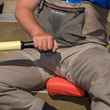

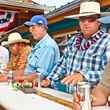




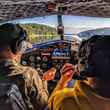
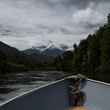



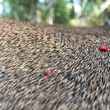
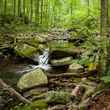



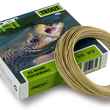
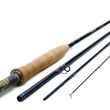



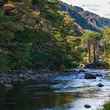
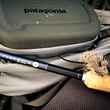

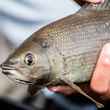
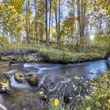
Comments
Sam replied on Permalink
This is a horrible article. Our islands are far from open for business. Just because you can fish means nothing. You could fish the day after the storm. Our islands are in a horrible state and only God can help us as our government who only pays attention to New Providence keeps watering down the truth.
scott rhodes replied on Permalink
I was in Abaco in December the fishing may be great and I can't say what condition Freeport was in but I can say Abaco is far from being open. World Central Kitchen was great. But I do have to say team Rubicon was in over there heads in Abaco. I'm not trying to say anything bad about them. They did try. But they came with all their equipment like a fury. But left Marsh harbour in the same fashion. Their visit was short. The group that doesn't get to much Media attention. At least not as much as it should is All hand and Hearts. They have been there from the beginning and has committed for at least two years. That group keeps going. Even when they hit with small roadblocks. And there definitely has been some. They are a hard working group that works with whatever they can get. In my opinion I would channel my donations to All Hand and hearts if you want to give back to the Bahamas. Team Rubicon has done great work and continues to do so. But hurricane recovery of this magnitude needs a long term commitment. Some that Team Rubicon did not do.
Pages